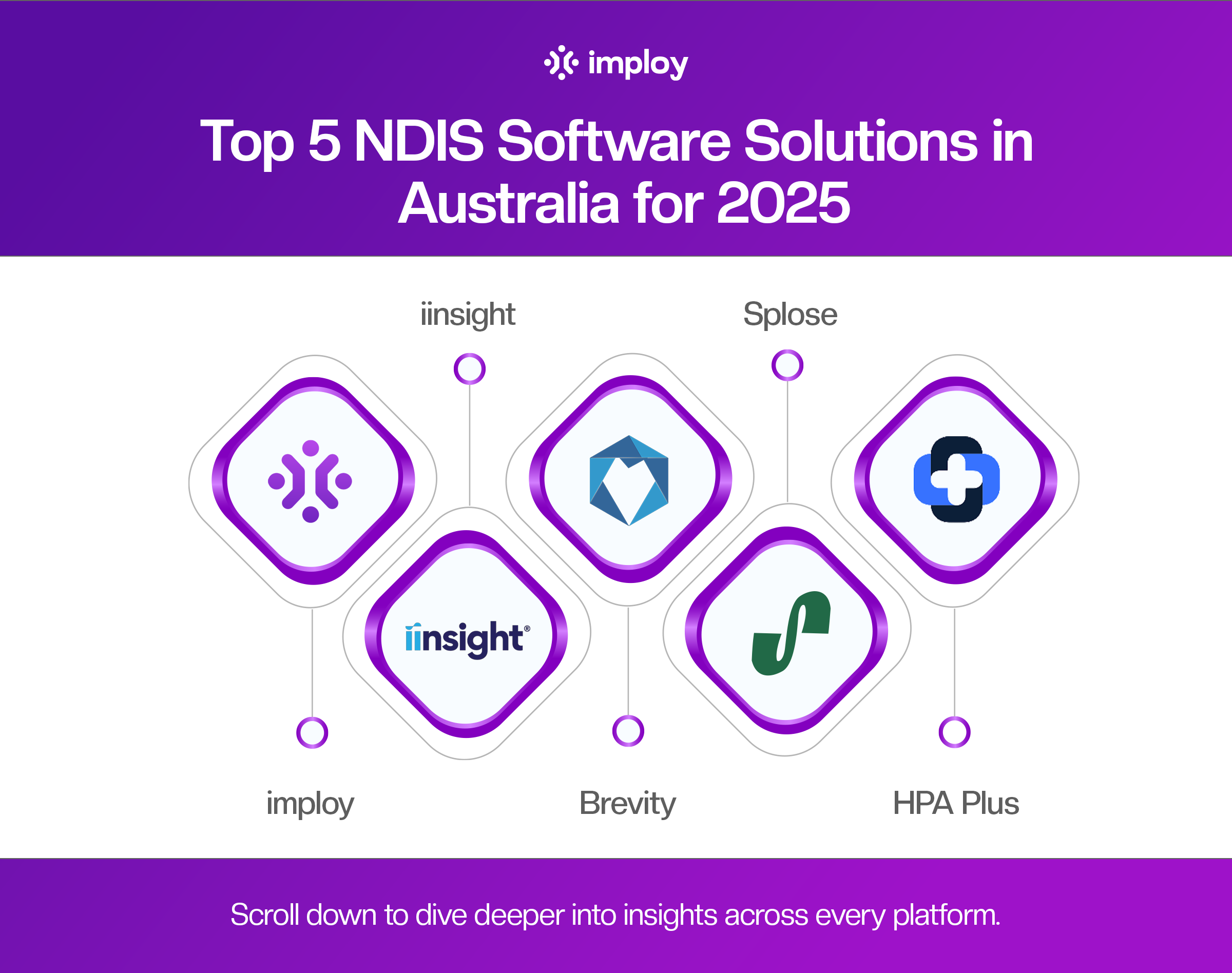NDIS Schedule of Supports Guide
Learn everything about the NDIS Schedule of Supports - what it is, how it works, and how participants and providers can use it effectively.


Navigating the National Disability Insurance Scheme (NDIS) can sometimes feel overwhelming, especially when it comes to understanding what supports are available and how your funding can be used. One of the most useful tools to guide this process is the NDIS Schedule of Supports.
This guide breaks down what the Schedule of Supports is, how it works, and how both participants and providers can use it effectively. Whether you’re new to the NDIS or an experienced provider, understanding this document can make managing your plan much easier.
What is the NDIS Schedule of Supports?
A Schedule of Supports is a formal agreement between an NDIS participant and their service provider that lists the specific supports and services the provider will deliver.
It outlines the type of supports, how often they’ll be provided, their duration, and the cost for each service. The Schedule of Supports ensures that both the participant and provider have a clear understanding of what has been agreed upon - avoiding confusion or disputes later.
Typically, a Schedule of Supports will include:
- The participant’s details and NDIS number.
- A list of support items (including NDIS support item codes).
- The frequency and duration of each support.
- The price per hour or per session (aligned with NDIS price limits).
- The total estimated cost of services over the plan period.
- The start and end dates of the agreement.
- The responsibilities of both the provider and the participant.
This document forms part of the Service Agreement between the participant and provider, helping to ensure transparency, accountability, and compliance with NDIS pricing arrangements.
Manage Your NDIS Schedule of Supports with Imploy
Use Imploy’s NDIS-compliant template to submit clear, complete reports without guesswork.
- Automatically match services with correct NDIS support item codes
- Track service delivery, funding usage, and participant approvals
- Generate accurate invoices aligned with pricing limits
Download the PDF or start using Imploy for free to streamline your Schedule of Supports with confidence.
Key Components of an NDIS Schedule of Supports

A well-prepared Schedule of Supports clearly outlines all essential information to ensure transparency, accountability, and compliance with NDIS requirements. The main components include:
- Provider and Participant Details: Names, contact information, and NDIS numbers for both the participant and the service provider. This ensures clear communication and accountability.
- Service Delivery Dates: The start and end dates for the specific services, which should align with the participant’s overall NDIS plan period.
- Description of Supports: A detailed description of the supports to be provided. For example, this might include “4 hours of community access per week” or “2 hours of personal care weekly.”
- Frequency and Duration: Specifies when and how often supports will be delivered, whether weekly, monthly, or as a one-off service.
- Cost and Pricing: The price for each support item, ensuring it adheres to the NDIS Pricing Arrangements and Price Limits. This ensures funding is allocated correctly and avoids overspending.
- Funding Category and Line Items: Clearly indicates which funding categories the support falls under - Core, Capacity Building, or Capital, and which specific line items the funding will be drawn from.
- Additional Considerations (if applicable): Some schedules may also include notes about cancellations, service modifications, reporting requirements, or participant responsibilities. Including these details helps prevent misunderstandings and ensures both parties know their obligations.
A comprehensive Schedule of Supports acts as a roadmap for both participants and providers. It not only clarifies what services will be delivered and how funding will be used but also helps maintain compliance with NDIS guidelines.
Before finalising, it’s essential to review the schedule carefully to ensure all key details are included - including any specific participant needs, special considerations, or reporting requirements, so nothing important is overlooked. A complete and accurate schedule ensures a smooth, transparent, and effective NDIS service delivery process.
Categories of Supports
The NDIS divides supports into three main categories. Understanding these categories helps you know where your funding can be spent and how each type contributes to your goals.
1. Core Supports
Core Supports cover everyday activities that help participants live independently and stay connected with their community.
Examples include:
- Assistance with daily personal activities (such as showering or dressing).
- Household tasks (like cleaning or meal preparation).
- Community participation and transport.
Core Supports are flexible, which means you can move funds around within this category to suit your changing needs.
2. Capital Supports
Capital Supports are for larger, one-off purchases that improve independence and accessibility.
Examples include:
- Assistive technology such as wheelchairs or communication devices.
- Home modifications (like ramps or bathroom adjustments).
- Vehicle modifications.
These supports usually require prior approval because they involve significant investment and must meet NDIS criteria.
3. Capacity Building Supports
Capacity Building Supports help you develop new skills and achieve long-term independence.
Examples include:
- Therapy sessions (occupational therapy, speech pathology, physiotherapy).
- Support coordination.
- Employment-related training and skill development.
These supports are structured and goal-focused, helping participants build confidence and capability over time.
Understanding Support Items
Each support listed in the Schedule of Supports has its own support item code, description, and maximum price limit.
For example, a one-hour support coordination session or a community access activity will each have their own support item. These codes are used by providers when making claims through the NDIS portal to ensure that services are billed accurately and transparently.
Understanding your support items helps you:
- Ensure services align with your goals and funding.
- Track spending and avoid overclaiming.
- Maintain compliance with NDIS pricing and policy guidelines.
Practical Example:
Let’s say you receive Capacity Building - Improved Daily Living funding in your NDIS plan. You choose to see an occupational therapist (OT) to help you improve your daily routines. The OT service might be listed under the support item 15_615_0128 - Assessment, Recommendation, Therapy, and/or Training.
This item has a set hourly price limit determined by the NDIS. If your OT charges within that limit and records the correct item code, their claim will be approved smoothly. However, if they use the wrong code or exceed the price cap, the claim could be rejected - causing payment delays.
Using the correct support item code ensures transparency, prevents billing issues, and helps both participants and providers stay compliant with NDIS requirements.
Example of Common Support Items
| Category | Support Item Code | Support Description | Purpose |
|---|---|---|---|
| Core Supports | 01_011_0107_1_1 | Assistance with Self-Care Activities | Helps with daily personal tasks like showering, dressing, or grooming. |
| Capacity Building | 15_615_0128_1_3 | Assessment, Recommendation, Therapy, and/or Training (includes AT) | Occupational therapy or physiotherapy sessions to improve daily living skills. |
| Core Supports | 04_104_0125_6_1 | Community, Social and Recreational Activities | Support to access community activities and social programs. |
Using the Schedule of Supports Effectively
Both participants and providers play an important role in making sure the Schedule of Supports is used effectively.
For Participants:
- Align supports with your goals: Review your plan and identify which supports directly help you achieve your NDIS goals.
- Monitor your budget: Track how much funding you’ve used and how much remains.
- Ask for help: If you’re unsure about a support item, ask your NDIS planner or provider for clarification.
- Plan ahead: Book services early to ensure continuity and avoid disruptions.
For Providers:
- Use correct item codes: Match each service to the appropriate code to ensure accurate billing.
- Follow pricing limits: Stay within the maximum price limits set by the NDIS.
- Keep records: Maintain clear documentation of services delivered for compliance and audits.
- Stay up to date: Use the latest version of the Schedule of Supports to avoid errors.
These steps ensure participants make the most of their funding and providers deliver services correctly and transparently.
How Imploy Helps Providers with the Schedule of Supports
Managing the Schedule of Supports can be complex for providers, especially when handling multiple participants, support items, and compliance requirements. imploy is designed to simplify this process, ensuring accuracy, efficiency, and compliance.
- Imploy streamlines rostering and service delivery by assigning support workers to participants and sessions that align with approved support items and frequencies.
- Imploy ensures accurate invoicing and claims by automatically generating invoices that match the Schedule of Supports, reducing rejected claims and payment delays.
- Imploy supports compliance and documentation by keeping a complete digital record of all services delivered, support items used, and participant approvals, simplifying audits and reviews.
- Imploy saves time and reduces administrative burden, allowing providers to focus on delivering high-quality care rather than paperwork.
By integrating imploy into their workflow, providers can manage the Schedule of Supports confidently, stay fully compliant with NDIS requirements, and deliver high-quality services efficiently.
Manage Your NDIS Schedule of Supports with Imploy
Use Imploy’s NDIS-compliant template to submit clear, complete reports without guesswork.
- Automatically match services with correct NDIS support item codes
- Track service delivery, funding usage, and participant approvals
- Generate accurate invoices aligned with pricing limits
Download the PDF or start using Imploy for free to streamline your Schedule of Supports with confidence.
Final Thoughts
A Schedule of Supports is a vital tool for clarity, transparency, and compliance in NDIS service delivery. It helps providers avoid errors, prevent disputes, and deliver consistent, high-quality care.
Imploy simplifies rostering, invoicing, and claims management, reducing administrative work and helping providers stay organized and compliant. Combined with a well-prepared schedule, Imploy enables providers to manage services confidently, track funding accurately, and maintain accountability for smooth, effective service delivery.
Frequently Asked Questions (FAQs)
1. What is a Schedule of Supports?
A Schedule of Supports is a document that outlines the services a provider will deliver to an NDIS participant, including support items, frequency, duration, costs, and funding categories.
2. Why is the Schedule of Supports important for providers?
It ensures services are delivered accurately, invoices match NDIS pricing rules, and providers stay compliant while reducing errors and disputes.
3. When should a Schedule of Supports be created?
A Schedule of Supports should be created when starting services with a participant, renewing or reviewing a plan, or making changes to service frequency, type, or cost.
4. Can one support item cover multiple services?
No. Each support item is specific to a particular service or activity. Using an incorrect item can lead to rejected claims and non-compliance.
5. How often should the Schedule of Supports be reviewed?
Providers should review schedules whenever there are changes in a participant’s plan, funding, or service requirements, and at least annually during plan reviews.
Related resources
Ready to transform your client management?
Start your free trial today and see how Imploy can help you achieve more with less effort.




